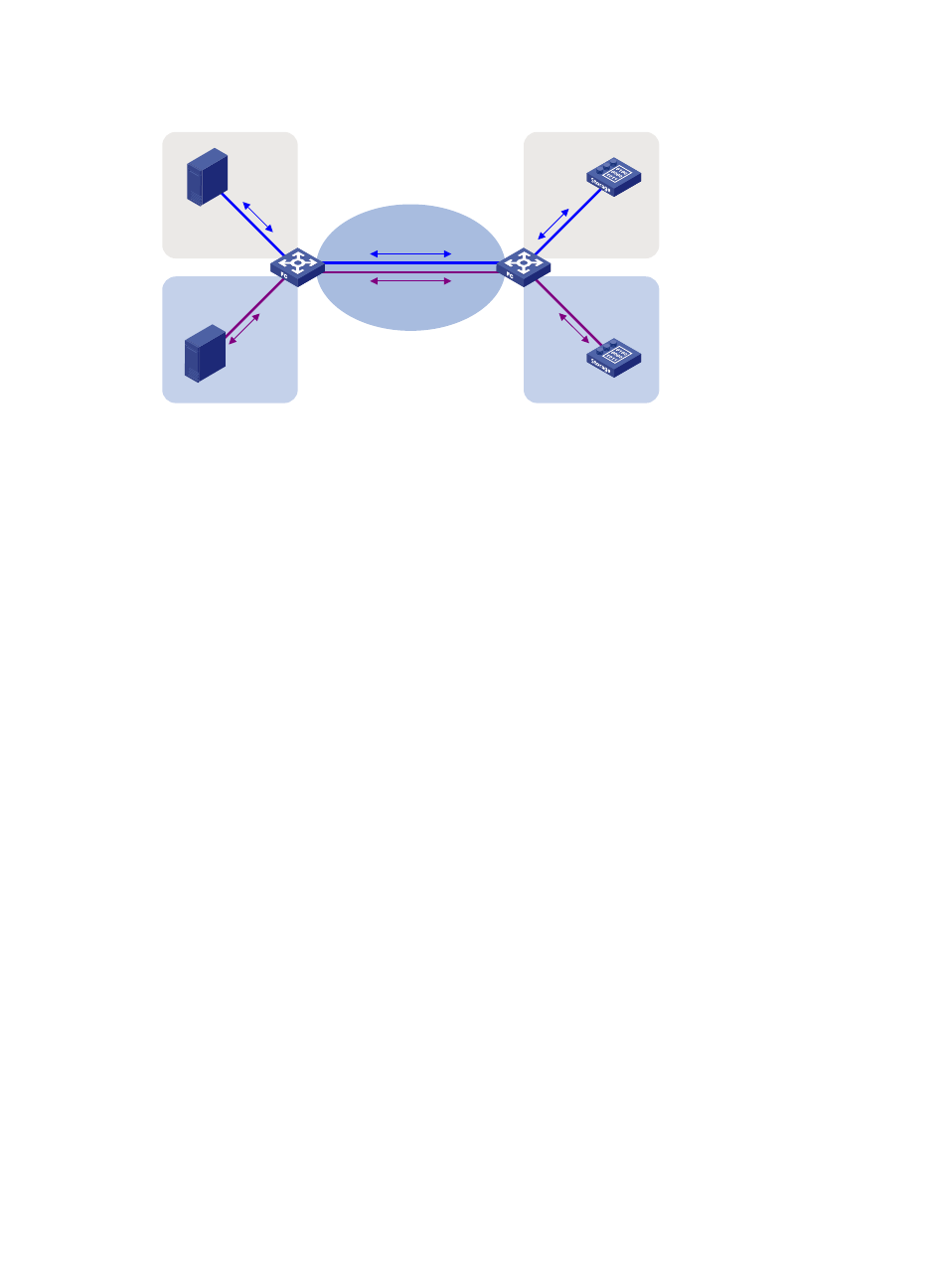Trunk vsan in an fc network – H3C Technologies H3C S5830V2 Series Switches User Manual
Page 39

28
Figure 16 Access VSAN
During the transmission procedure, frames are not changed. In order to support multiple VSANs, a switch
must use different physical interfaces. The access VSAN technology does not reduce the number of
physical connections. Though different VSANs are isolated from each other, they are physically rather
than logically isolated. This mode cannot give full play to the advantages of the VSAN technology.
Trunk VSAN in an FC network
The trunk VSAN technology implements logical isolation among VSANs. The trunk VSAN adds a Virtual
Fabric Tagging Header (VFT_Header, also known as VSAN tag) to the FC frames. The VFT_Header
contains a VF_ID (also known as "VSAN ID") field to indicate the VSAN of the FC frames. In this way, FC
frames with different VF_IDs are contained in their respective VSANs, and different VSANs cannot
communicate with each other. The trunk VSAN implements physical connectivity and logical isolation in
the network.
shows a typical trunk VSAN:
•
The F_Ports in blue on switches are configured as access ports and assigned to VSAN 1.
•
The F_Ports in purple are configured as access ports and assigned to VSAN 2.
•
The E_Ports are configured with trunk VSANs 1 and 2.
When servers read the disks, the N_Ports of different servers send FC frames without VFT_Headers to the
F_Ports on FC switch Switch A. Switch A searches for the outgoing interfaces in the FIB table of the VSAN
that each F_Port belongs to. These F_Ports use the same E_Port as the outgoing interface. When the
frames are forwarded out of the E_Port, they are tagged with the VFT_Header of VSAN 1 and VSAN 2,
respectively, and travel across multiple VSAN-capable switches to the E_Port of FC switch Switch B.
According to the VFT_Headers, Switch B searches for the outgoing interfaces in the FIB tables of the
VSANs, and forwards them to the F_Ports. Then, the F_Ports remove the VFT_Headers and send the
frames to the N_Ports of different disk devices. The frames from the disk devices to the server are
processed in the same way and finally reach the servers.
E_Port
E_Port
F_Port
F_Port
F_Port
F_Port
N_Port
N_Port
N_Port
N_Port
VSAN 1
E_Port
E_Port
VSAN 1
VSAN 2
VSAN 2
FC Fabric
Server A
Server B
Disk A
Disk B
FC switch B
FC switch A
